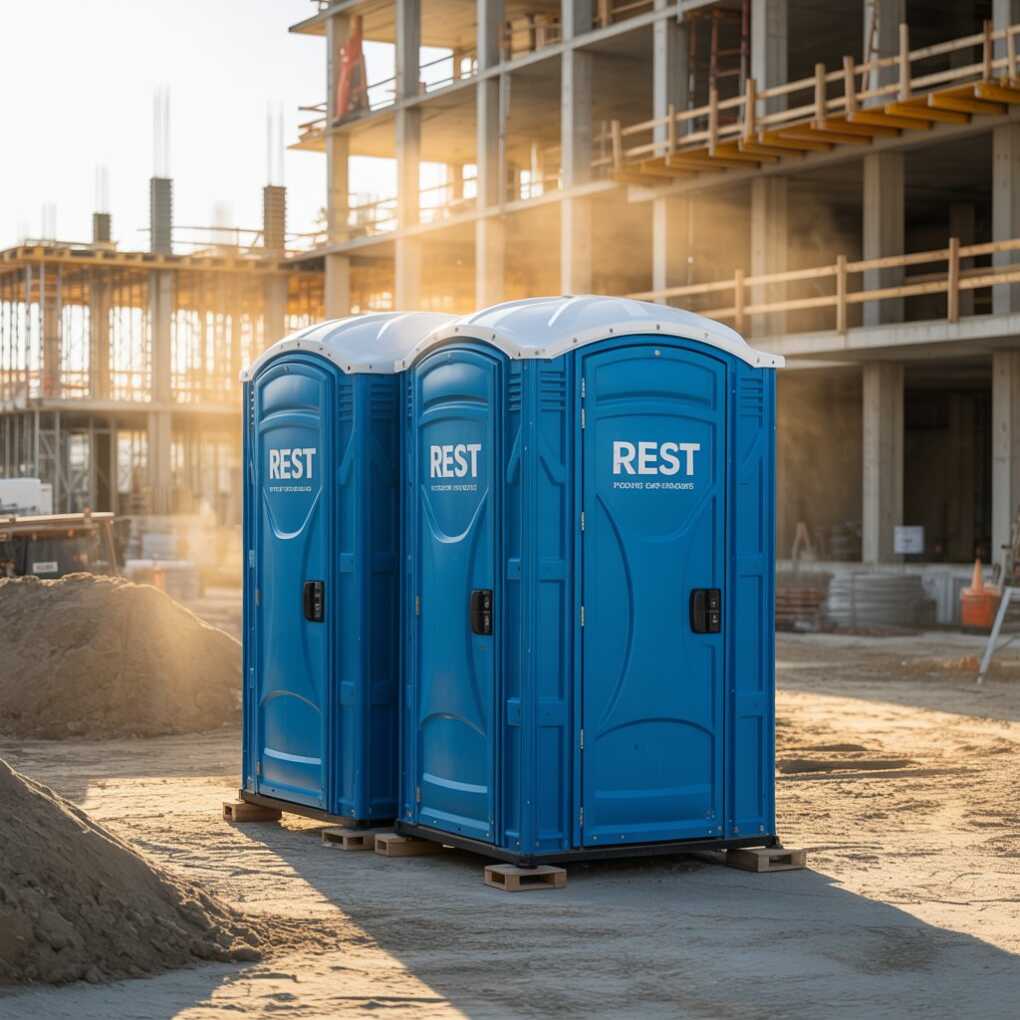The unseen engine of productivity on modern construction sites isn’t just heavy machinery—it’s strategically placed portable sanitation solutions. While often overlooked, these facilities form the bedrock of regulatory compliance, workforce efficiency, and ethical project management. In an industry where time is money and safety is paramount, purpose-built portable restrooms deliver measurable returns far beyond basic necessity .

Why Portable Restrooms Are Non-Negotiable for Modern Construction
Construction projects operate under brutal deadlines and complex logistical challenges. Without on-site portable sanitation facilities, workers lose valuable time traveling to find distant restrooms—a productivity drain that compounds daily across large crews. Beyond efficiency, inadequate sanitation triggers severe health complications. Workers forced to delay restroom use face urinary tract infections, bladder muscle weakening, constipation, and hemorrhoids . Open defecation becomes a toxic risk when facilities are absent, spreading bacteria and creating environmental hazards .
Regulatory bodies like OSHA mandate strict sanitation standards under ANSI Z4.3-2024, requiring:
- 1 non-flushing toilet per 10 workers
- 1 handwash facility per 20 workers (serviced weekly)
- Increased units for projects exceeding 400 cumulative labor hours .
Ignoring these invites hefty fines and project shutdowns—a preventable risk with proper portable restroom deployment.
Core Benefits: More Than Just a Place to Go
⚙️ Productivity Unleashed
- Time Savings: On-site units eliminate 15-20 minute off-site breaks, saving 42-56 labor hours weekly for a 20-person crew .
- Focus Retention: Workers remain task-engaged without travel disruptions or “distraction chains” (e.g., stopping for coffee off-site) .
- Morale Multiplier: Clean, accessible facilities signal respect, reducing turnover. A Texas State Modular study linked porta-potty access to 27% higher crew satisfaction scores .
“Portable restrooms eliminate logistical hassles, letting crews focus on building—not bathroom hunts.” – R&R Sanitation Industry Report
Pro Tip: For high-rise sites, use crane-lifted “Hi-Rise Units” or “Lift Units” to eliminate 30+ minute descents .
🩺 Health & Hygiene Defense
- Infection Control: Hand sanitizers/sinks reduce germ spread, cutting absenteeism from gastrointestinal or urinary illnesses .
- Chronic Risk Mitigation: Regular restroom access prevents long-term bladder and colon complications .
- Toxic Exposure Prevention: Contained waste disposal stops groundwater contamination from human waste .
✅ Compliance & Legal Safeguarding
- OSHA/ANSI Alignment: Meeting minimum unit counts avoids violations averaging $15,000+ per incident .
- ADA Inclusivity: Wheelchair-accessible units accommodate disabled workers, fulfilling federal accessibility mandates .
🌱 Environmental Stewardship
- Water Conservation: Porta-potties use 98% less water than permanent facilities .
- Controlled Waste Processing: Professional services pump and treat waste at EPA-approved facilities, preventing soil/water contamination .
🤝 Client & Community Professionalism
- Privacy Protection: Workers avoid intruding on clients’ homes or businesses, preserving trust .
- Odor/Visual Impact Management: Well-maintained units prevent foul smells and unsightly waste, respecting neighboring properties .
Choosing Your Site’s Sanitation Arsenal
Table 1: Portable Restroom Types & Construction Applications
| Unit Type | Key Features | Best For |
|---|---|---|
| Standard Construction | Basic toilet, urinal, TP, hand sanitizer | Small crews; short-term projects |
| ADA-Compliant | Wheelchair ramp, grab bars | Sites with disabled workers |
| Hi-Rise/Lift | Crane-liftable; compact design | Skyscrapers; multi-story builds |
| Flushable Deluxe | Flushing toilet, sink, mirror, lighting | Long-term sites; executive crews |
| Urinal Trailer | 4+ urinals; high-capacity use | Male-dominated crews >50 workers |
| Restroom Trailers | Climate control, sinks, partitions | Mega-projects; client-facing sites |
Selection Criteria:
- Crew Size & Gender Balance: 1 unit/10 workers minimum; add women-specific units if >30% female .
- Project Duration: Choose durable, climate-controlled units for projects >6 months.
- Site Conditions: Opt for crane-liftable units for high-rises or stabilized units for uneven terrain .
- Special Needs: Include handwashing stations (1 per 4 toilets) and shower trailers for hazardous material work .
Strategic Placement & Maintenance Protocols
Table 2: Porta Potty Placement Optimization Checklist
| Factor | Best Practice | Risk of Non-Compliance |
|---|---|---|
| Location | ≤5-minute walk from work zones | 18% productivity loss |
| Stability | Level ground; avoid excavation zones | Tip-overs; structural damage |
| Safety | Away from swinging cranes; protected by barriers | Worker injury |
| Servicing Access | Within 40 ft of access roads | Overflow; unsanitary conditions |
| Lighting | Under streetlights for night work | Slip-and-fall accidents |
| Security | Inside fenced areas with locks | Vandalism; unauthorized public use |
Maintenance Essentials:
- Weekly Servicing: Pump waste, refill supplies, disinfect surfaces .
- Emergency Protocols: Partner with providers offering 24-hour response for clogs or overflows.
- Hygiene Stations: Pair every 2-3 toilets with handwashing units stocked with soap, water, and paper towels .
Beyond Basics: Advanced Sanitation Integration
Forward-thinking sites now leverage:
- Solar-Powered Units: Reduce generator dependence with LED lighting and ventilation .
- Real-Time Monitoring: Smart sensors alert providers when tanks near capacity, enabling proactive servicing .
- Multi-Station Trailers: Combine restrooms, changing rooms, and break areas for large infrastructure projects .
Supplier Selection Checklist:
✅ OSHA/ANSI compliance guarantees
✅ Emergency service availability
✅ Eco-friendly waste processing
▶️ Explore industry-leading solutions: Portable Restrooms for Construction Sites
The Foundation of Dignity & Efficiency
Portable restrooms are the silent workhorses of construction efficiency—where every minute saved from bathroom breaks fuels on-schedule delivery. They safeguard health, demonstrate respect for skilled labor, and protect projects from costly regulatory penalties. As one project manager noted: “Clean bathrooms keep my crew on-site, focused, and feeling valued—that’s ROI you can’t fake.” .
By strategically deploying ADA-compliant, high-capacity, or climate-controlled units matched to site-specific demands—and maintaining them rigorously—construction firms transform basic sanitation into a competitive advantage. In 2025, leading sites don’t just rent porta-potties; they integrate engineered sanitation ecosystems that amplify human potential at every elevation.
